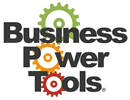on: In: Cash Flow,
News for Independent Business
Trying to crack the tax code for small businesses is becoming a little clearer as a result of the Tax Cuts and Jobs Act, which takes effect starting with your 2018 return and beyond, but the changes are so significant, it’s important to understand the bill and how it will impact your small business. Big business in the form of C Corps got an amazing break with the bill. One of the big tenets of the Tax Cuts and Jobs Act is the major reduction in the C Corporation tax rate, which was slashed from 35 percent to 21 percent. A percentage of small businesses do incorporate as C Corps, so they too will gain that tax cut.
A recent survey by the NFIB reported that 61% of small businesses claimed capital outlay, with 43% spending on equipment, 27% on vehicles, and 16% on improved or expanded facilities. They can credit the Tax Cuts and Jobs Act for this. It makes it easier than ever to write off the cost of buying equipment or making certain improvements now, rather than depreciating the cost over a number of years. Let’s take a high-level look at how to write off equipment and capital improvements under the new tax code. In addition, you can use any of these options whether you pay cash or finance the purchase in whole or in part.
First Year Expensing: You can expense the cost of certain qualified real property now. Check Section 179 for all items, but many additional items have been added to the list of what is a qualified improvement, thus allowing you to take the expense now rather than depreciate over a number of forward years. Despite these generous dollar limits, expensing continues to be limited to taxable income. Thus, if a C Corp buys $800,000 of capital equipment but only has $350,000 of taxable income, the expensing deduction is limited to $350,000, although the excess amount can be carried forward.
Bonus Depreciation: For 2018, bonus depreciation applies to 100% of the cost of qualified property, whether new or pre-owned, and there’s no dollar limit. This ostensibly allows you to write off the cost of the eligible asset in the year it was purchased and first used.
De Minimis Safe Harbor: A deduction is taken in the year in which certain materials and supplies are paid for or consumed, whichever is later. For example, a 25 room motel buys 25 small refrigerators at a cost of $40 per refrigerator, and they are placed in each room. The business can opt to deduct $1,000 as non-incidental materials and supplies. The refrigerators aren’t added as an asset to the balance sheet.
The bottom line is this is a good time to think about the tax changes and your business structure. Keep an eye out for when the IRS releases additional guidance. If needed, speak with a tax advisor about your specific situation. And lastly, one of the key reasons to form an LLC or Corporation has always been the ability to minimize the personal liability of business owners from things that happen in the business. This still holds true. The most important reason to form a business entity isn’t necessarily to save a little on taxes, but to protect your personal assets for years to come.
The business plan to organize and prioritize investing your tax savings
Here are a 13 reasons to consider using the Business Power Tools Dashboard with your clients.
Although many entrepreneurs believe that a business plan is only for raising capital, we’ve found that it may actually be more useful after you have the money… “What should we buy first?!?” Whether it’s an angel or venture capital investment, or from the taxes you saved, before you rush into “investing” into your business, having a clear understanding and priorities for what you want to do with the money will give you the best ROI. What if you had a proven tool to help you update your vision for what you want to build as well as a clear roadmap to get there?
Meet BizPlanBuilder.
It helps you write a polished business plan for your project quickly and efficiently. Its organized system walks you step-by-step through the process of preparing an effective plan for business growth.
Now you can create an entire range of vital business development and funding documents, including a summary business plan, a comprehensive operating plan, financial projection models, investor presentations, invitations to advisors and directors, and more, using our comprehensive set of trusted templates and dynamic online forms.
Why start from scratch? Let our experienced writers do the heavy lifting for you!
Simply click on any document to launch the document-builder wizard. Then, edit the fully-scripted templates to generate everything you need for your company’s annual strategy or investment funding proposal. It’s fully collaborative enabling you to engage your team to include their ideas and insights.
Now, the newest version incorporates a comprehensive online dashboard! T not-so-hidden advantage of the dashboard to keep all your business documents organized and stored — being this organized could 3X the value of your business if/when you sell it!

 Posted By:
Posted By: 





